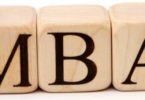Quiz on Marketing mix:
What does the marketing mix refer to?
(a) The various types of customers a company targets.
(b) The assortment of products offered by a company.
(c) The combination of marketing elements that a company uses to achieve its marketing objectives.
(d) The financial resources allocated to a company’s marketing budget.
Which elements are commonly included in the marketing mix?
(a) Only product and price.
(b) Only promotion and place.
(c) Product, price, promotion, and place.
(d) Product, price, promotion, place, and performance.
How does the marketing mix help a company in its marketing efforts?
(a) It focuses solely on product design and development.
(b) It provides guidelines for employee training programs.
(c) It ensures compliance with government regulations.
(d) It helps create a balanced and cohesive marketing strategy by considering key elements that influence customer behaviour and purchasing decisions.
Which elements are commonly included in the marketing mix?
(a) Product, promotion, and profit.
(b) Price, people, and public relations.
(c) Place, planning, and packaging.
(d) Product, price, place, and promotion.
How does the marketing mix concept benefit businesses?
(a) It guarantees instant success in the market.
(b) It minimises the need for customer research.
(c) It provides a framework to create a well-rounded marketing strategy that addresses key aspects of product, pricing, distribution, and promotion.
(d) It eliminates the need for advertising and promotional activities.
How does pricing play a role in the marketing mix?
(a) It affects the perception of value by customers and impacts purchasing decisions.
(b) It influences how employees are trained.
(c) It dictates the company’s organisational structure.
(d) It determines the company’s mission and vision.
What does the “promotion” element encompass?
(a) The physical distribution of products.
(b) The process of setting product prices.
(c) Advertising, public relations, and other communication efforts to promote the product.
(d) The arrangement of products in a retail store.
Which component focuses on the strategies and tactics used to communicate the value of a product to the target market?
(a) Product
(b) Place
(c) Price
(d) Promotion
Which of the following is one of the primary elements of the marketing mix?
(a) Profit
(b) Packaging
(c) Politics
(d) Patents
What does the “place” element refer to?
(a) The physical location of the company’s headquarters.
(b) The distribution channels and methods used to make the product available to customers.
(c) The internal company policies and procedures.
(d) The pricing strategy for the product.
How does the “price” element of the marketing mix impact consumer perception?
(a) It has no effect on consumer perception.
(b) Higher prices always lead to greater perceived value.
(c) Lower prices are perceived as better quality.
(d) Price influences how customers perceive the value of a product and affects their purchasing decisions.
Which tasks are typically associated with the “promotion” element of the marketing mix?
(a) Setting product prices and determining profit margins.
(b) Designing the physical appearance and features of a product.
(c) Creating advertising campaigns, public relations efforts, and sales promotions.
(d) Identifying the most effective distribution channels for a product.
What is the primary focus of the “place” element in the marketing mix tasks?
(a) Determining the appropriate product pricing.
(b) Developing attractive packaging for the product.
(c) Identifying the target market for the product.
(d) Ensuring the product is available to the right customers through distribution channels.
What do the “Five C’s of Marketing Mix” refer to?
(a) The five primary colours used in marketing materials.
(b) A framework for evaluating consumer preferences.
(c) A comprehensive analysis of five core components in a marketing strategy.
(d) The five most important products or services a company offers.
Which of the following is NOT one of the Five C’s of Marketing Mix?
(a) Customer
(b) Company
(c) Competitor
(d) Consumption
How does the “Competitor” component of the Five C’s of Marketing Mix influence marketing decisions?
(a) It has no impact on marketing strategies.
(b) It guides companies in understanding their competitive landscape and positioning their offerings.
(c) It helps companies design their products.
(d) It only affects product pricing.
Which type of marketing mix is focused on offering unique products tailored to the preferences and needs of individual customers?
(a) Mass Marketing Mix
(b) Niche Marketing Mix
(c) Standard Marketing Mix
(d) Universal Marketing Mix
Which marketing mix type involves creating a single marketing strategy for a wide and diverse customer base?
(a) Niche Marketing Mix
(b) Customised Marketing Mix
(c) Mass Marketing Mix
(d) Targeted Marketing Mix
Related: questions about CRM
What is the main goal of a marketing mix strategy?
(a) To focus solely on product development.
(b) To create a comprehensive plan for employee training.
(c) To develop a well-balanced and cohesive approach to marketing by considering product, price, promotion, and place.
(d) To minimise all costs associated with marketing activities.
How does the “promotion” element of the marketing mix strategy contribute to a company’s success?
(a) By determining the physical distribution of products.
(b) By solely focusing on cost-cutting measures.
(c) By helping the company create a positive public image through advertising and communication efforts.
(d) By focusing only on the product design.
Which of the following is NOT one of the marketing mix variables?
(a) Process
(b) Packaging
(c) People
(d) Planning
Which of the following is one of the core elements of the marketing mix?
(a) Packaging
(b) Policies
(c) Profits
(d) Partnerships
Related: Recruitment And Selection Quiz
What does the “promotion” element of the marketing mix involve?
(a) Determining the product’s price.
(b) Creating effective advertisements and communication strategies.
(c) Developing the physical features of the product.
(d) Setting up distribution channels.
How does the “place” element of the marketing mix impact customer accessibility?
(a) It has no effect on customer accessibility.
(b) It determines the physical location of the company’s headquarters.
(c) It focuses on pricing strategies.
(d) It involves selecting distribution channels and methods to make the product available to customers.
Which of the following is a typical step in marketing mix modelling?
(a) Selecting random pricing for products.
(b) Ignoring the influence of advertising campaigns.
(c) Analysing historical data and applying statistical techniques to measure the effects of marketing variables.
(d) Focusing solely on product features.
How can marketing mix modelling benefit a company’s decision-making process?
(a) By disregarding the impact of marketing efforts on sales.
(b) By providing insights into the company’s competitors.
(c) By focusing solely on short-term goals.
(d) By helping optimise marketing strategies by allocating resources effectively among different marketing elements.






